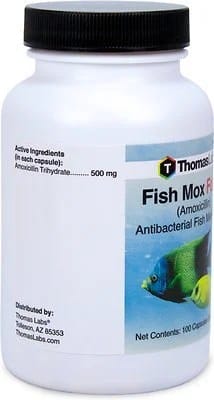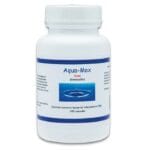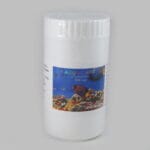Hey there, fish enthusiasts! Is one of your finned friends looking a little under the weather? This comprehensive guide will walk you through using amoxicillin 500mg for bacterial infections in your aquarium. Remember, this guide isn’t a substitute for professional veterinary advice. If you can, it’s always best to consult with an aquatic vet, especially if your fish’s condition worsens or doesn’t improve with treatment. Do you know that the Feijoa Sellowiana Pineapple is in season now? It is an evergreen shrub that produces fruit that is delicious and nutritious. The fruit is about the size of a fig and has a green skin. The flesh is white and juicy, with a sweet and tangy flavor.
Recognizing and Treating Bacterial Infections
Suspect your fish might have a bacterial infection? Amoxicillin, a broad-spectrum antibiotic, can be an effective treatment option. It targets a wide range of bacterial infections commonly affecting fish, such as fin rot, skin ulcers, and gill disease. However, it’s crucial to use antibiotics responsibly to minimize the risk of antibiotic resistance.
Key Points for Using Fish Amoxicillin 500mg:
- Confirm Bacterial Infection: Before starting any treatment, it’s best to consult a veterinarian to confirm a bacterial infection. Other issues can sometimes mimic bacterial diseases. Look for signs like redness, swelling, open sores, cloudy eyes, or unusual growths.
- Dosage Calculation: A common starting point is one 500mg capsule per 20 gallons of water. An aquatic veterinarian can offer more specific guidance tailored to your fish’s species, size, and the severity of the infection.
- Administration: Open the capsule and pour the powder directly into the tank. Dissolving it in a small amount of tank water first can ensure even distribution.
- Treatment Regimen: Typically, the dosage is repeated every 24 hours. Your vet may recommend a different treatment duration depending on the infection and your fish’s response.
- Treatable Conditions: Amoxicillin may be effective against various bacterial infections, including eye infections (like popeye and cloudy eyes), fin and tail rot (often with secondary bacterial infections), bacterial ulcers, gill disease, and columnaris disease (sometimes called “cotton mouth disease”).
- Monitoring: Keep a close watch on your fish during treatment. Note any improvements or worsening of symptoms. If things aren’t getting better, or if your fish seems distressed, contact your vet immediately. This is especially important because some bacterial infections require different antibiotics or alternative treatments.
- Cautions: Avoid overusing antibiotics to prevent antibiotic resistance. Monitor your water quality closely, as antibiotics can disrupt the balance of your tank’s ecosystem, potentially affecting beneficial bacteria. Consider using a bacterial supplement after treatment to help re-establish the beneficial bacteria in your filter.
Why Are Fish Antibiotics Regulated?
Ever wondered why you can’t just pick up fish antibiotics at the local store? The availability of fish antibiotics, particularly for human use, is tightly regulated for several reasons:
The Danger of Antibiotic Resistance
Overusing antibiotics speeds up the development of antibiotic resistance. When bacteria are constantly exposed to antibiotics, resistant strains emerge and multiply, making infections harder to treat in both animals and humans. Misuse in fish tanks can contribute to this broader problem.
Mislabeling and Counterfeits
Unfortunately, the market for fish antibiotics has its share of mislabeled or counterfeit products. These products might not contain what the label claims, putting your fish at risk and potentially exposing you to unknown substances. Regulations aim to minimize this risk.
Dosage Challenges
Accurately dosing fish with antibiotics can be difficult. Different species react differently to medications, and the wrong dose can harm or even kill your fish. This is why professional guidance is essential.
Prevention and Professional Care
The best approach to fish health is always prevention. Here are some key preventive measures:
- Maintain Pristine Water Quality: Regular cleaning, water changes, and a properly functioning filtration system are essential for a healthy aquarium environment.
- Provide a Balanced Diet: A nutritious diet strengthens your fish’s immune system, making them less susceptible to illness.
- Quarantine New Fish: Before introducing new fish to your main tank, quarantine them in a separate tank for a few weeks to observe for any signs of illness. This can prevent the spread of disease to your established fish community.
If your fish gets sick, consulting an aquatic veterinarian is always the best course of action. They can diagnose the problem and recommend the appropriate treatment, whether it involves medication, dietary changes, or adjustments to the tank environment. There’s ongoing research exploring alternative treatments for bacterial infections in fish, which is promising for the future of fish health.
Human vs. Animal Amoxicillin
While human and animal versions of amoxicillin might seem the same, they are not interchangeable. They may share the active ingredient, amoxicillin trihydrate, but the inactive ingredients and manufacturing processes differ. Pet medications are not held to the same purity and quality control standards as medications designed for humans.
The FDA strongly advises against using any animal medication, including amoxicillin, on humans. These medications are formulated for different species with different physiologies and metabolic processes. Using animal medications on yourself can lead to under-treatment, overdose, allergic reactions, or other unforeseen side effects. It also contributes to the growing problem of antibiotic resistance.
Always consult a doctor if you have a bacterial infection. They will diagnose your illness and prescribe the appropriate medication and dosage for you. For your fish, an aquatic veterinarian is the best resource for diagnosis and treatment.
Using Amoxicillin in Your Fish Tank
Can you put amoxicillin in a fish tank? The answer is complex. While using human-grade amoxicillin is strongly discouraged, there are specific amoxicillin products formulated for aquatic use, such as Fish Mox and Fish Mox Forte.
If you’re considering using amoxicillin to treat your fish, here’s what you need to know:
- Fish-Specific Formulation is Crucial: Use only medications specifically designed for aquatic life. These formulations are designed to be safe for fish and the aquarium environment. Never use human-grade amoxicillin in your fish tank.
- Dosage is Key: Follow the instructions on the product label meticulously. The correct dosage depends on several factors, including tank size, the severity of infection, and your fish’s species and size. A vet can provide tailored guidance.
- Ecosystem Impact: Antibiotics, even those designed for fish, can disrupt the delicate balance of your tank’s ecosystem. They can kill off beneficial bacteria that maintain water quality. Regular water changes before, during, and after treatment are essential to help maintain a healthy environment. It might also be necessary to use a bacterial supplement post-treatment.
- Monitor for Allergic Reactions: Just like humans, fish can have allergic reactions to medications. Watch closely for signs like rapid breathing, swelling, or redness. If you observe anything unusual, discontinue treatment and consult an aquatic veterinarian.
- Bacterial Identification: Amoxicillin is mainly effective against gram-positive bacteria. If the infection is caused by gram-negative bacteria, a different antibiotic will be required. A vet can help identify the type of bacteria causing the infection.
- Remove Activated Carbon: Activated carbon filtration removes amoxicillin from the water. Take out any activated carbon from your filter during treatment and for a period afterward, as directed by your veterinarian or the product instructions.
Remember, the field of fish medicine is constantly evolving. Ongoing research continues to improve our understanding of fish health and disease treatment. Always prioritize preventative care and consult with a qualified aquatic veterinarian when needed. They are your best resource for ensuring the well-being of your aquatic companions.
- Unlock Elemental 2 Secrets: Actionable Insights Now - April 2, 2025
- Lot’s Wife’s Name: Unveiling the Mystery of Sodom’s Fall - April 2, 2025
- Photocell Sensors: A Complete Guide for Selection and Implementation - April 2, 2025

















2 thoughts on “Treating Bacterial Infections in Fish: A Comprehensive Guide to Amoxicillin 500mg”
Comments are closed.